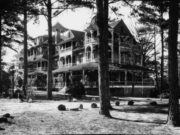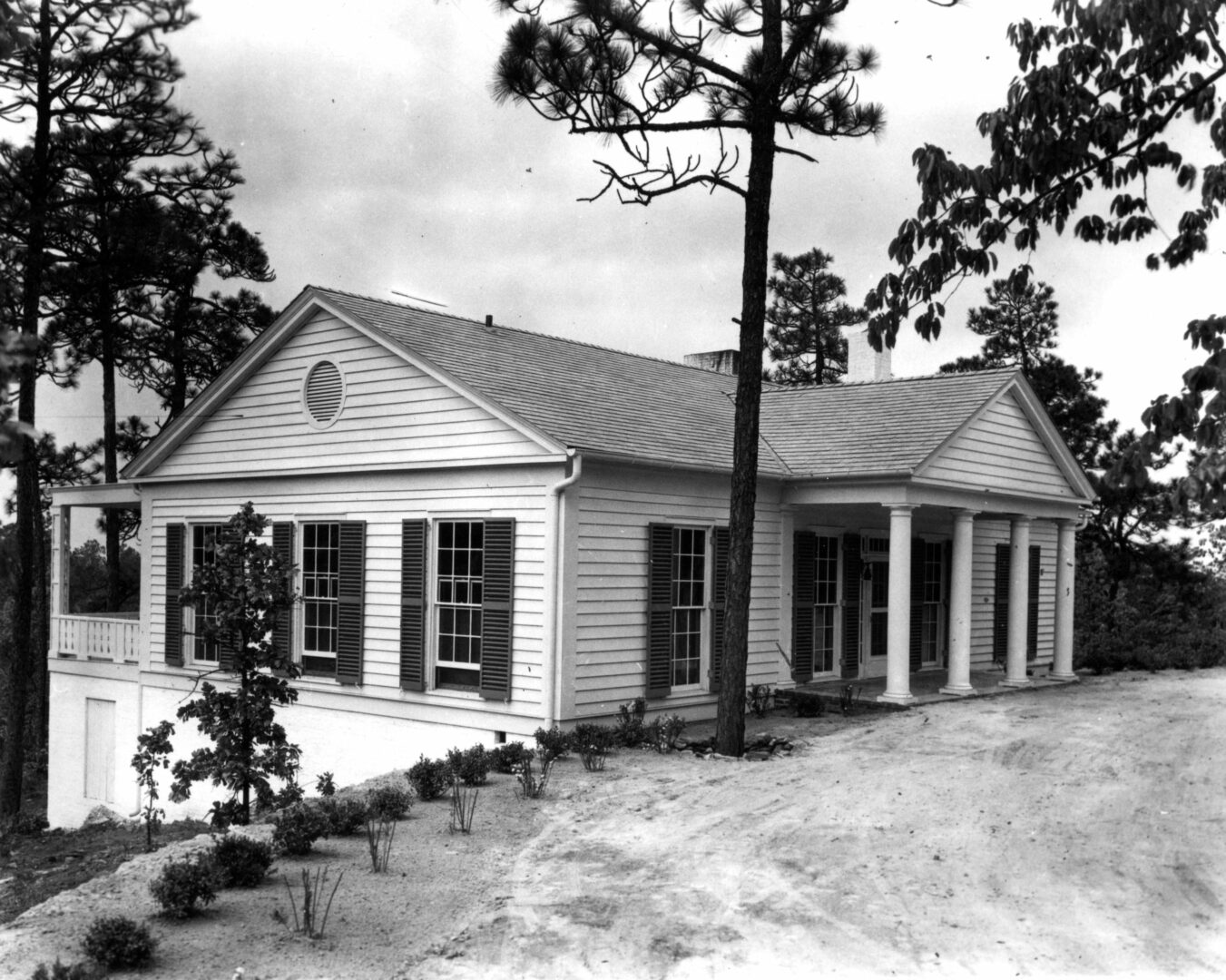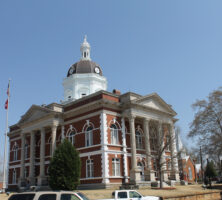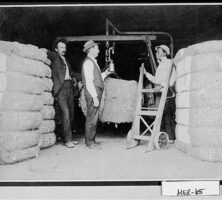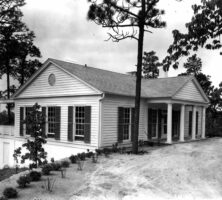Meriwether County, in west central Georgia, is the state’s seventy-first county, created in 1827 from 503 square miles taken from Troup County. It is named for David Meriwether, a Revolutionary War (1775-83) general remembered for his accomplishments as an interpreter for Creek Indians, a state legislator, and a U.S. congressman.
The land in Meriwether County was originally held by the Creek Indians. Greenville, the county seat and the oldest town in the county, was laid out in 1828 on land owned by General Hugh W. Ector and first settled by Abraham B. Ragan, whose log cabin store stood on the site of the current courthouse square. Greenville, originally spelled “Greeneville,” was named for Nathanael Greene and incorporated twice—in 1828 and again in 1852. The first courthouse, reportedly built in 1832, was damaged by a tornado in 1893, restored, and used until 1904, when a second courthouse replaced it. A fire destroyed all but the outer walls of the new courthouse in 1976, but restoration of its exterior, along with a major modification of its interior, was completed in 1980.
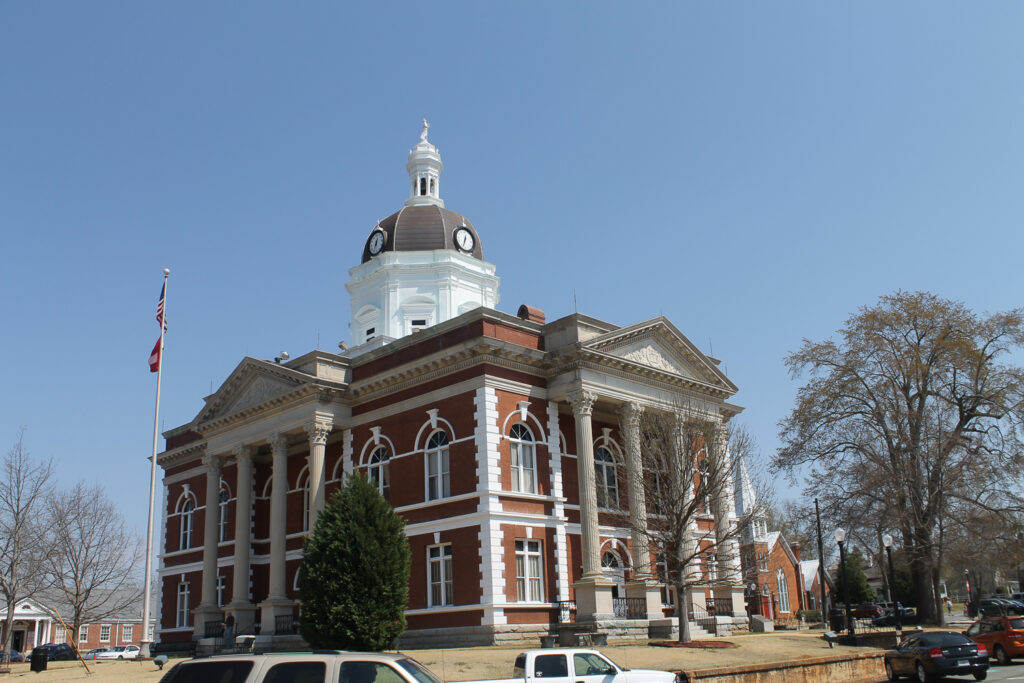
In addition to Greenville, incorporated towns in Meriwether County include Gay, Lone Oak, Luthersville, Manchester, Warm Springs, and Woodbury. Manchester, incorporated in 1909 and nicknamed “The Magic City,” was created at the junction of three railroad lines. It was designated a “Better Hometown” in 1997 and has restored its downtown area to the look of the 1930s. Gay, settled by William Sasser, was first called Sasserville, but the name was changed when someone discovered that there was already a town named Sasser in Georgia. The new name honors William F. Gay, the first store owner in town and the first mayor under the town’s incorporation in 1907.
Luthersville, first settled in the mid-nineteenth century and called Keith Crossroad, changed its name to honor Martin Luther, founder of the Lutheran denomination of Christianity. Luthersville was incorporated in 1872. Warm Springs, first named Bullochville when it was incorporated in 1893, took the name Warm Springs in 1924 to reflect its now renowned mineral springs, to which thousands have come for therapy. The most famous of these visitors was U.S president Franklin D. Roosevelt, who first came to Warm Springs in 1924 and liked it so well that he built a second home there, known as the Little White House. Woodbury, settled long before its incorporation in 1872, was first named Sandtown for its sandy land. When the first post office was established there in 1845, the town’s name was changed to Woodberry. The current spelling of Woodbury was officially adopted in 1854.
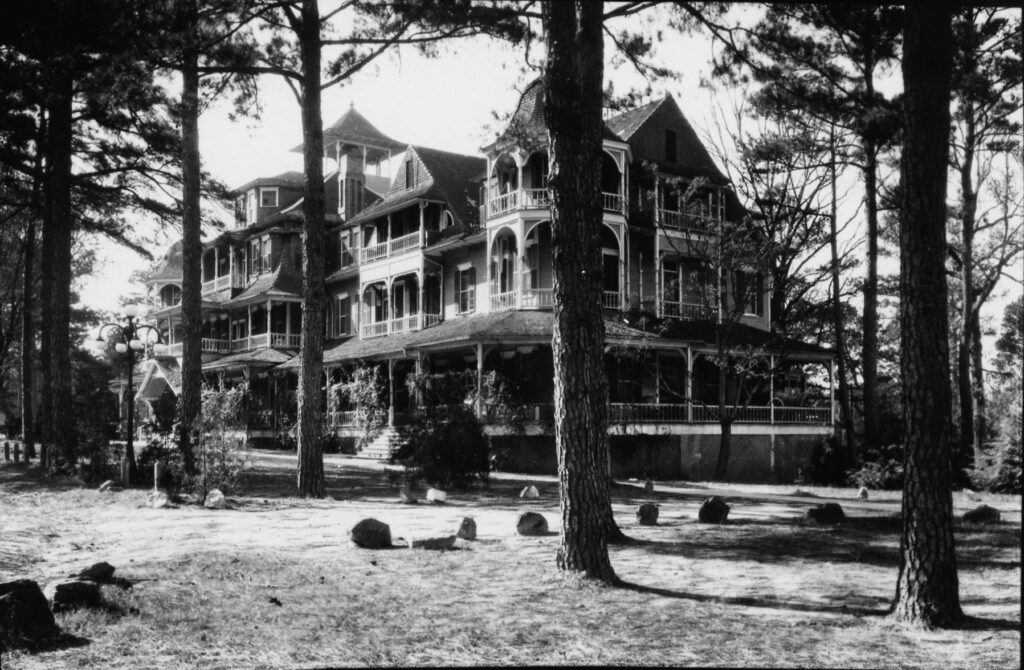
Tourism has been a substantial part of Meriwether County’s economy since 1832, when resorts complete with inns and cabins were built around the area’s mineral springs. At first, visitors came from the cities of the South, but as railroads reduced reliance on horse and carriage, people from farther away were able to enjoy the curative springs and stay for a season. By 1900 the transient nature of this income source was augmented by the arrival of wealthy families who built summer homes in the area. Another early component of Meriwether County’s economy was the processing of cotton. The county continues to lean heavily on industry, and one of the largest employers is Georgia-Pacific.
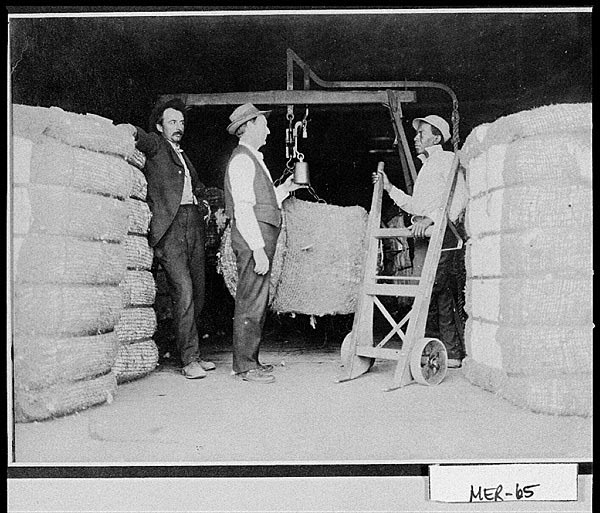
John M. Slaton, governor of Georgia in 1911-12 and again in 1913-15, was born near Greenville. As governor, Slaton commuted the sentence of Leo Frank in 1915. Jasper Guy Woodroof, often called “the father of food science,” was also born in Meriwether County.
Warm Springs, with Roosevelt’s Little White House, is a major attraction. In association with the historic home, the Georgia Department of Natural Resources operates a state park. The adjacent Georgia Rehabilitation Center (later Roosevelt Warm Springs Institute for Rehabilitation), founded in 1964 and brought under state control in 1974, treats those with brain and spinal cord injuries, strokes, and other conditions needing rehabilitation. The film Warm Springs (2005), which chronicles Roosevelt’s time in Warm Springs during the 1920s, was made on location at the park and center.

The historic section of the village of Warm Springs was placed on the National Register of Historic Places in 1974. The register lists twenty-two other sites in Meriwether County, among them the historic district of Greenville and many private homes, farms, and churches.
A satellite campus of West Georgia Technical College is located in Meriwether County.
According to the 2020 U.S. census, the population of Meriwether County is 20,613.


